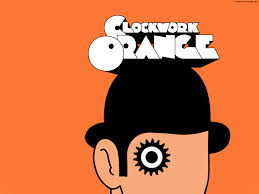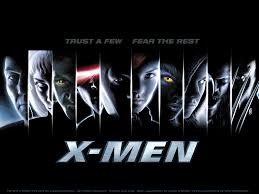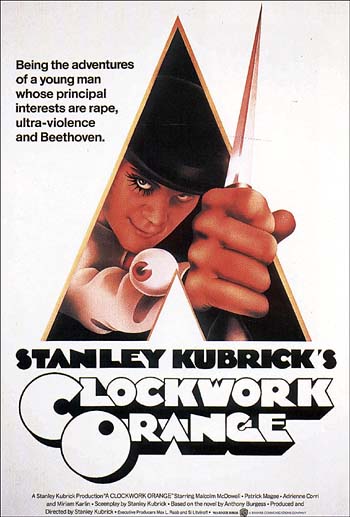
I tend to regard predictive programming, propaganda, agenda pushing, and esoteric symbolism in media into one category, though I accept they are different subdivisions. With that in mind, please forgive my straying and smearing of all of these concepts in the following article. I would also advise that the links from actual movie titles simply link to each specific movie’s IMDB page, whereas any of the other links offer supporting evidence, and that this article may contain spoilers.
We all realise there is symbolism and messages within media, and that this is an undeniable phenomenon. We wouldn’t watch films or read books if we couldn’t associate with the story, characters, and messages. Here are two examples of well known messages in movies but ones that are never formally mentioned:
 Clockwork Orange (1971) – In both Kubrick’s movie, and Burgess’ novel the protagonist speaks in a slang, Nadsat, using Russian words slipped into English grammar. The subtext of this, the book having been written in 1962 – the height of the cold war, is that every generation’s youth-culture naturally develops it’s own slang language, and the Russians have taken advantage of this by penetrating western media with subliminal signals to ‘program’ the youth into speaking Russian as a precursor to the coming communist domination of the planet. As I recall, this subtext is never explicitly referred to in the film, and only mentioned in passing during an easily missed three line dialogue in the book…..
Clockwork Orange (1971) – In both Kubrick’s movie, and Burgess’ novel the protagonist speaks in a slang, Nadsat, using Russian words slipped into English grammar. The subtext of this, the book having been written in 1962 – the height of the cold war, is that every generation’s youth-culture naturally develops it’s own slang language, and the Russians have taken advantage of this by penetrating western media with subliminal signals to ‘program’ the youth into speaking Russian as a precursor to the coming communist domination of the planet. As I recall, this subtext is never explicitly referred to in the film, and only mentioned in passing during an easily missed three line dialogue in the book…..
 X-Men (2000) – A film and comicbook story used as metaphor for racism. The ‘mutants’ are simply a new ethnic race dealing with the fear and suspicions of the other races. Hence the broad ethnic mix across both factions of mutants with the ‘Magneto’ character a Jew. Having experienced a tormented childhood at the hands of the Nazis, Magneto is not truly a bad guy, just someone simply trying to protect his ‘new’ (mutant) racial group, but because of the experiences of his youth he is doing so on the offensive and by using aggressive actions. One can easily draw parallels between the characters of ‘Professor-X’ and ‘Magneto’, and those of Martin Luther King and Malcolm-X, respectively.
X-Men (2000) – A film and comicbook story used as metaphor for racism. The ‘mutants’ are simply a new ethnic race dealing with the fear and suspicions of the other races. Hence the broad ethnic mix across both factions of mutants with the ‘Magneto’ character a Jew. Having experienced a tormented childhood at the hands of the Nazis, Magneto is not truly a bad guy, just someone simply trying to protect his ‘new’ (mutant) racial group, but because of the experiences of his youth he is doing so on the offensive and by using aggressive actions. One can easily draw parallels between the characters of ‘Professor-X’ and ‘Magneto’, and those of Martin Luther King and Malcolm-X, respectively.
I think one would be hard-pressed to find a serious critic who would dispute these messages appear in the subtext of either of these movies, and their source materials, and that in itself confirms that movies, and media in general, are used to convey covert messages.
“I think that when the film industry can capture an idea and make it glamorous and gorgeous, so that the audience isn’t even aware that they’re embracing something they never would have embraced before, then, yes, the film as a social motor can inaugurate some kind of change.” – Tom Hanks quoted in this article.
Now the question is whether some of these messages are nefarious and/or predictive of the future in some way.
Alan Watt is often cited as the originator of the term ‘predictive programming‘ and he was certainly the first person I heard using that specific term. However, it’s always been obvious that media is used to influence and guide society, for example to impose a belief and value system on society at large – in short propaganda.
The argument whether art imitates life or vice versa comes into play here, and this is truly circular – art may imitate life, but life also does imitate art.
In 1930 the Hays code was established for motion pictures, something which shows that even during this era the power of movies to manipulate audiences and spawn imitation in ‘real life’ was obvious. This code consisted of strict moral guidelines on what could or couldn’t be shown, and the resulting treatment of characters. For example, a character committing a crime on screen must be punished appropriately.
While the code was officially abandoned in 1968, many of it’s ethics were retained at least as far as the ’90s when a slew of films courted controversy, particularly those associated with Quentin Tarantino such as True Romance (1993), Natural Born Killers (1994), and Pulp Fiction (1994), all of which allowed killers to ‘ride off into the sunset’ and ‘live happily ever after’.
In the early days of cinema gangsters were often given heroic portrayals, even though they always received a comeuppance (usually death) for their criminality, while government officials were portrayed as ‘the bad guys’. One example of this comes from the 1931 James Cagney’ gangster film The Public Enemy. The turn-around began with another Cagney’ movie, 1935’s G-Men, an FBI propaganda piece which was fully approved and endorsed by J. Edgar Hoover himself.
From this point onwards, police and government authority figures became ‘the good guys’, something that was rarely challenged.
Examples of the power of movies to create real life imitations include an incident from my school years where a boy was bullying a smaller boy under the watchful gaze of a bigger lad leaning against a wall. Then the biggest lad slowly uttered the words “Leave the kid alone”, a quote from The Wanderers (1979) and a reference everyone present immediately understood.
Another example of the imitation of movies was the massive popularisation of so-called ‘Rambo-knives’ following the movie First Blood (1982).
 Recall the furore surrounding the release of Natural Born Killers where several murders were attributed to fans of the movie. Similarly, after Kubrick’s death it was revealed he had withdrawn Clockwork Orange in the UK after a spate of copycat attacks by perpetrators dressed as the ‘droogs’ from the film. As Alan Watt would say “Monkey see, monkey do”…..
Recall the furore surrounding the release of Natural Born Killers where several murders were attributed to fans of the movie. Similarly, after Kubrick’s death it was revealed he had withdrawn Clockwork Orange in the UK after a spate of copycat attacks by perpetrators dressed as the ‘droogs’ from the film. As Alan Watt would say “Monkey see, monkey do”…..
What I have attempted to establish so far is that…
1) Media does convey hidden messages/subtexts.
2) Media is powerful enough to create real life imitations.
Returning specifically to the ‘predictive programming’ meme however, one must ask, ‘what is the purpose of predictive programming’?
In 2001: A Space Odyssey, Kubrick’s 1968 classic, at approximately [40m 30s] the Dr. Heywood Floyd character gives a presentation in which he states:
“First, I bring a personal message from Dr. Howell who has asked me to convey his deep appreciation for the many sacrifices you’ve had to make. And, of course, his congratulations on your discovery which may prove to be among the most significant in the history of science.
“Now, I know there have been some conflicting views regarding the need for complete security in this matter. More specifically, your opposition to the cover story created to give the false impression of an epidemic at the base. I understand that beyond it being a matter of principle many of you are troubled by the concern and anxiety this story of an epidemic might cause to your relatives and friends on earth. I completely sympathize with your negative views. I find this cover story personally embarrassing, myself. However, I accept the need for absolute secrecy in this. And I hope you will too. I’m sure you’re all aware of the grave potential for cultural shock and social disorientation contained in this situation if the facts were prematurely made public without adequate preparation and conditioning.”
I would suggest this is a key definition of predictive programming, ‘to prepare and condition the mind to accept the cultural shock or social disorientation of forthcoming change’. This change might be a cultural one as in 2001 (the discovery of an extraterrestrial artifact), but it may also be preparation to accept a shocking event. The 1999 movie Fight Club ends with the skyscrapers of financial institutions collapsing into their own footprint. How many people would have believed that they would see this event played out in reality only two years later on 9/11?
Similarly, the pilot episode of the X-Files spin off series The Lone Gunmen followed a narrative about the military-industrial complex hijacking a passenger plane via remote control, and crashing the vehicle into the World Trade Center as a pretext to start wars and a new arms race.
Not only is this narrative almost perfectly in sync with later theories surrounding 9/11, it is so in sync that it offers an easy meme to use to discredit the theory: “Don’t be silly! Do you really think a stupid TV show is real!”
This offers us a second possible definition of predictive programming; ‘a tool to dismiss theorists as fantasists watching too much TV or movies’.
For a third definition, predictive programming can also be seen as ‘a tool to lead the viewer toward a predetermined conclusion in the event of some type of occurrence’. If the viewer were to watch a steady course of films depicting Arabs as terrorists such as Munich, United 93, and Paradise Now for example, and were he then to encounter some type of terrorist event as seen in these movies such as a bombing, either directly or indirectly through news media, would it not seem perfectly logical for him to assume the perpetrators are Arab?
It could be argued that the BBC’s use of Muslim terrorists in MI5 drama series ‘Spooks’ – both before and after the July 7, 2005 London Bombings – conditioned citizens to the official war on terror paradigm.
When I first came across the predictive programming idea, I considered for a while that intelligence operatives were actually being inspired by media, that they were copying events from fictitious movies and books, etc., rather than actually planting these ideas in the media itself, but with admissions by The Lone Gunmen stars etc, that scriptwriters were rubbing shoulders with agents, the sheer volume of material (including esoteric symbolism) that we now see in popular culture, and the way some things are predicted (Fight Club‘s collapsing skyscrapers, pre-crime from Minority Report in 2002, Batman-Sandy Hook) this idea simply does not seem feasible any more.
Four of the biggest movies of 2012 all featured symbolism, propaganda or programming of some description:
The Hunger Games – The first movie sourced from a trilogy of novels, and rumoured to be set against a relatively accurate depiction of the future society the world is moving toward under the UN’s Agenda 21 plan. The movie logo appears to be a take off of a Nazi radio-gunner’s badge. Set in a future north America where the majority are poverty stricken peasants labouring for a small elite clique of city dwellers who live in luxury. The U.S. and Canada have been carved into twelve regions while Agenda 21 supposedly carves the U.S. into ten regions.

 Prometheus – The legendary Greek mythological character who stole fire from the Gods, in order to elevate his status and become like the Gods. The name ‘Prometheus’ actually means ‘forethought’, someone who can predict the future. The Illuminati (which I consider to be a catch all name for the wealthiest families on the planet – though some of them may be members of a genuine secret historical order) have lionised Prometheus as they apparently share the same goal. Witness the statue of Prometheus at Rockefeller Plaza in New York. Ridley Scott’s movie itself depicts man’s quest to find his creator, the meaning of life, an elevated status, and eternal life. Transhumanism is woven in (a theme appearing across the entire Alien movie series).
Prometheus – The legendary Greek mythological character who stole fire from the Gods, in order to elevate his status and become like the Gods. The name ‘Prometheus’ actually means ‘forethought’, someone who can predict the future. The Illuminati (which I consider to be a catch all name for the wealthiest families on the planet – though some of them may be members of a genuine secret historical order) have lionised Prometheus as they apparently share the same goal. Witness the statue of Prometheus at Rockefeller Plaza in New York. Ridley Scott’s movie itself depicts man’s quest to find his creator, the meaning of life, an elevated status, and eternal life. Transhumanism is woven in (a theme appearing across the entire Alien movie series).
The Dark Knight Rises – Early on in the film, at approximately [6m 45s] a press conference takes place, in which the Mayor refuses to repeal the ‘Dent’ act as it has given the police ‘teeth’ against organised crime. The suggestion is clear that this act is both draconian and unpopular but claimed as necessity. My interpretation of this was subtle conditioning in favour of the NDAA and a reinforcement (a technique used in Neuro Linguistic Programming, a method of hypnosis performed using only language) against it’s repeal.
The controversial Alex Jones suggested in his pre-release breakdown that one of the subtle underlying themes of most ‘superhero’ movies is a suggestion that the average person is powerless and must wait for a hero (the state or other powerful institution) to come and save or protect him – a form of subconsciously programming viewers with ‘learned helplessness’.
In this movie the ‘bad guys’ are portrayed as anti-corruption avengers but the film pushes the idea to the extreme as they feel Gotham City is so corrupted, the city, and it’s population, must be destroyed (in true Babylon style) rather than saved or given an opportunity to repent.
At approximately [43m 30s] there is an attack on the stock market during which a policeman is told “It’s not our money. It’s everybody’s.” The statement is misleading as we know the stock market is rigged in such a manner as to redistribute wealth upwards and away from the common man. Governments actually force pension funds to invest in the market thereby creating more capital for the ‘elites’ to harvest.
 Then we have the mass murder links/coincidences. At the Aurora, Colorado premiere of the movie, a mass shooting surrounded with controversy and contradictory evidence took place just as the film was starting. Prior to the film the final forthcoming attractions promotional trailer, for a movie called Gangster Squad, featured gangsters who stepped out of a cinema screen and began to shoot audience members. This created confusion when the real massacre occurred seventeen minutes into the film, and some people thought it was a publicity stunt related to that previous trailer.
Then we have the mass murder links/coincidences. At the Aurora, Colorado premiere of the movie, a mass shooting surrounded with controversy and contradictory evidence took place just as the film was starting. Prior to the film the final forthcoming attractions promotional trailer, for a movie called Gangster Squad, featured gangsters who stepped out of a cinema screen and began to shoot audience members. This created confusion when the real massacre occurred seventeen minutes into the film, and some people thought it was a publicity stunt related to that previous trailer.
While I have not yet had the opportunity to verify it, supposedly ‘Aurora’ is referenced twice within the movie, although I’m not sure in what capacity (e.g. someone says the word, a shop name in the background, etc.). What is known is that a region of the fictional Gotham City had it’s name changed from South Hinkley to Sandy Hook sometime between the first Christopher Nolan movie, Batman Begins (2005), and this latest installment. Gotham’s ‘Sandy Hook’ features the sports stadium (a major plot location). The real ‘Sandy Hook’ is, of course, the name of the school at which a separate massacre took place six months after the cinematic release, and ten days after the DVD release of the film.

 At approximately [1h 58m 30s] we see a close up of a map, with the only visible name ‘Sandy Hook’. The stadium is circled as a target with the words ‘strike zone 1’ handwritten to the left of the stadium. Coincidental? Perhaps? But when one overlays promotional maps from the film with that of the real location in Connecticut we can see that a main road marked in blue on the map follows the exact trajectory of the road nearest Sandy Hook school (horizontally straight then curved upward at an angle) while the school relates at the exact same point as the sports stadium from the film.
At approximately [1h 58m 30s] we see a close up of a map, with the only visible name ‘Sandy Hook’. The stadium is circled as a target with the words ‘strike zone 1’ handwritten to the left of the stadium. Coincidental? Perhaps? But when one overlays promotional maps from the film with that of the real location in Connecticut we can see that a main road marked in blue on the map follows the exact trajectory of the road nearest Sandy Hook school (horizontally straight then curved upward at an angle) while the school relates at the exact same point as the sports stadium from the film.
What does it mean? I believe researcher Tom Secker has previously noted that when a method of communication has been compromised (in this case predictive programming) it’s possible that it then becomes time to mess with the information recipients, and as noted in the recent Smells Like Human Spirit/Tom Secker conversation, Secker also suggested a “sick joke“. I would agree and suggest in this case predictive programming is being used as a method to laugh at us. While this reference does appear to display foreknowledge, I suspect it’s also a ‘dead-end’ that can go no further without solid direct evidence.
Skyfall – On top of the traditional propaganda the James Bond movies push such as depicting MI6 as an humanitarian organisation with an agenda to protect the world and it’s populace, this film presents moral ‘grey’ areas, such as MI6 risking it’s own agents lives (sniper shot risking Bond), leaving them to die (Ronson), or hanging them out to dry (Silva) as clear cut and ethically necessary for the ‘greater good’. It also pushes the ‘cyberterrorism’ meme as a major threat that needs to be addressed. No mention of Stuxnet, Flame, and Duqu though, the main known cyberterrorism weapons, and ones that also happened to have been created by the joint forces of the U.S., UK and Israel.
Interestingly, at approximately [1h 10m 30s] Silva gives a speech about changing the nature of rats, something that hints at changing the nature of society.
Several other notable films including propaganda, symbolism, and predictive programming include:
The Sweeney (2012) – The big screen adaptation of the vintage TV series featured armed police with nothing more than pistols, fighting enemies with fully automatic machine guns. Does this suggest the police are underarmed and require more and bigger guns? The bad guys were also depicted as completely ruthless, the police response, when the law doesn’t work you break it…..
Watchmen (2009) – The movie of the ‘greatest comicbook ever written’ stays surprisingly true to the source material, with the only major alteration in the ending. Set in an alternative fascist America circa 1986 (the year it was written) it is rife with esoteric symbolism, from the murdered ‘Comedian’s ‘smiley’ badge splashed with blood over the right eye (also the cover of the graphic novel), to the aged villan, ‘Moloch’, to the continual appearance of the company ‘Pyramid Transnational’. Even Ozymandias’ Antarctic facility is called ‘Karnak’, which was the Egyptian temple of sunworship.
The movie ending involves a staged false flag attack blamed on the character of Dr. Manhattan and designed to unite the entire globe and avert thermonuclear war. While the comicbook ending is similar, the scapegoat in this case is a fake attack by aliens which includes planting synthetic alien corpses. This is a reference to ‘Project Bluebeam‘ (originally sourced from ‘The Report From Iron Mountain‘ I believe – though I’ve still yet to read it), the alledged U.S. government plan to stage a fake alien attack designed to unite the world under one world government.
Desperately Seeking Susan (1985) – The movie concerns the misidentification of an amnesiac girl thanks to an unusual jacket with ‘the pyramid from the dollar bill‘ embroidered onto the back. Also worth noting the film is by ‘Orion Pictures’ (see below)…..
Blade Runner (1982) – Often considered the greatest science fiction movie of all time, the film opens with a close up of a polluted futuristic L.A. skyline featuring a building shaped as a pyramid (headquarters of the Tyrell Corporation), then intersperses several cuts between the building and a close up of an eye. The plot follows a bounty hunter tracking and executing android ‘replicants’ (transhumanism) who in turn are searching for their own creator. Two artificial animals appear in the film, an owl (representative of Moloch) and a snake (Satan). The most famous dialogue from the film occurs prior to replicant Roy Batty’s death and begins “I’ve seen attack ships on fire off the shoulder of Orion…”. It has been suggested that Orion’s belt may have been the inspiration for the pyramids at Giza, which are layed out in a similar pattern and also feature tunnels which point toward the constellation. After discovering his creator, Tyrell, Batty kills him – the symbolism potent as metaphor for man’s destruction of God. It’s interesting that Scott has returned to the same themes with ‘Prometheus‘.
 Clockwork Orange (1971) – The movie poster is a pyramid with an eye shaped cufflink in the centre. The agenda is one of forcing citizens to act in a manner desired by government via scientific programming known as the ‘Ludovico Technique‘. The technique used actually involves forcing the subject to watch violence on a screen without being able to close the eyes or turn away- how’s that for programming? An often neglected subtext of the film is also the battle between science (control) and religion (humanity). At approximately [1h 23m 30s] the prison Chaplain says: “Choice. The boy has no real choice, has he? Self-interest. The fear of physical pain drove him to that grotesque act of self-abasement. It’s insincerity was clearly to be seen. He ceases to be a wrongdoer. He ceases also to be a creature capable of moral choice.”
Clockwork Orange (1971) – The movie poster is a pyramid with an eye shaped cufflink in the centre. The agenda is one of forcing citizens to act in a manner desired by government via scientific programming known as the ‘Ludovico Technique‘. The technique used actually involves forcing the subject to watch violence on a screen without being able to close the eyes or turn away- how’s that for programming? An often neglected subtext of the film is also the battle between science (control) and religion (humanity). At approximately [1h 23m 30s] the prison Chaplain says: “Choice. The boy has no real choice, has he? Self-interest. The fear of physical pain drove him to that grotesque act of self-abasement. It’s insincerity was clearly to be seen. He ceases to be a wrongdoer. He ceases also to be a creature capable of moral choice.”
Is a man who is compelled to do good, who cannot make a moral choice toward evil, still a man?
Well is he? Or is he something less?




